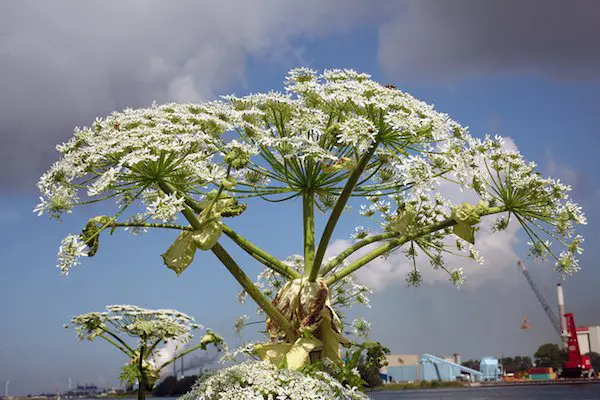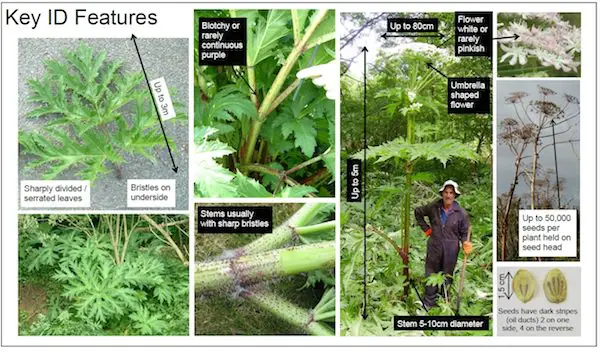People are being cautioned to be on the lookout for Giant hogweed, a plant with toxic sap that can cause third degree burns and even blindness. The toxic plants are an invasive species to North America, Europe and Britain and are spreading more and more, which means people and pets are coming into more frequent contact with it.
Giant hogweed (Heracleum mantegazzianum) is from the carrot family and is often mistaken for cow parsnip, woodland angelica and Queen Anne’s Lace (also known as wild carrot). It’s the hogweed’s sap that distinguishes it from other plants because of its high toxicity. Giant hogweed sap contains toxic chemicals that make skin hyper-sensitive to ultraviolet light.

Once the sap is exposed to sunlight, it reacts and can cause severe blistering, permanent scarring and blindness if it comes in contact with the eyes.
Sometimes, people do not feel the reaction until a few days later when the sap on their body is exposed to the sun. Even after the affected areas of skin have healed, the skin can remain sensitive to light for years. The chemicals in the sap are known as furocoumarins and are carcinogenic and teratogenic, meaning they can cause cancer and birth defects.
It’s no wonder people want to spread the word of the dangers of the plant! And humans are not the only ones at risk. Livestock and dogs and cats can also be badly harmed. A Great Dane in England recently sniffed a Giant Hogweed plant, which burned her nose severely.
If you or someone you know comes physical contact with giant hogweed they should immediately wash the affected area thoroughly with soap and cold water. If it gets into eyes, rinse them thoroughly with water and wear sunglasses. You will also need to keep the exposed area of skin out of the sun for at least 48 hours. It’s recommended you visit the doctor (or veterinarian, in the case of an animal) if you notice any signs of reaction.
10-year-old Lauren Fuller described how she came in contact with Giant Hogweed when out fishing with her father and ended up burning her hands. Caution: there are a few graphic photos contained in the video.
Key ways to identify the plant are:
- The stems are hairy and splotchy purple and green in color
- The leaves are dark green with three deep lobes
- It can reach a size of height of 14 feet (4-5 metres). Stems have a diameter of 5-10 cm.
- It has small, pretty, white flowers that are umbrella-shaped and can measure up to 80 cm across.
- The stems can still be toxic when they are dry and have no leaves!

If you find a plant in your neighborhood or garden, you are advised to contact your local municipality to inform them of the invasive plant. In the video below, there are some tips for the appropriate way to get rid of the hogweed.
People are advised not to make contact with the plant, and to keep pets and children away from the plant. Please share this important educational information with your friends and family!
